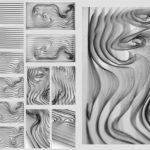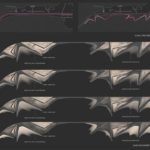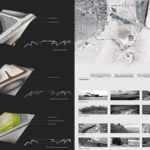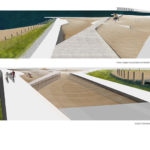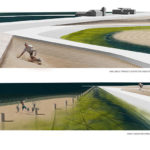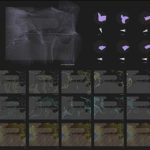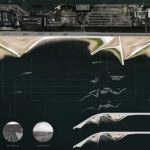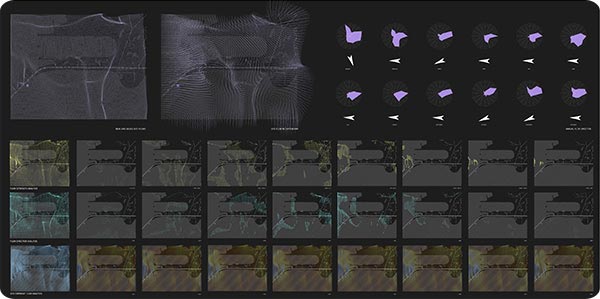| Project | Studio |
| Location | Miami, Florida |
| Date | Spring 2014 |
| Principals | Karen M’Closkey + Keith VanDerSys |
| Collaborators | Jing Guo |
–Studio Text
The pervasive theoretical shift in how we understand and represent the dynamics of living processes must be seen in the context of the digital age, with the ability of computers and software to process, and model, increasing amounts of information. These tools have greatly expanded our ability to engage the temporal and relational qualities inherent to the dynamic medium of landscape. Accordingly, this studio concentrates on new forms of media and their role in the identification and creation of patterns; in particular, we examine techniques that enable a multivalent, multilayered understanding of pattern as both expression and shaping influence of environmental processes. Our positioning of pattern is one that seeks to provide a framework that combines what has often been seen as conflicting agendas for landscape architecture; that is the distinction between formal, aesthetic, and representational concerns versus processes, sustainability and utilitarian concerns. We argue that patterns–due to their legibility and coherent structure–can guide and convey processes such that they have consequence in both the function and appearance of landscapes.
In other words, patterns–as “diagrams of process”–carry the potential to bind together landscape’s utilitarian and aesthetic functions: system and composition; performance and appearance; matter and sign. We will bring these sets of terms together by focusing on techne (art, craft) as that which forms the basis of all landscapes. Techne refers to both technology and techniques; that is, the infrastructural systems and constructions that guide and control functions and processes in landscapes, as well as the techniques of visualization that we use to model, express, and engage such flows and processes. We will explore the studio thematic of simulated natures by not only relying on ‘visible’ substance but also through drawing ‘invisible’ information (both data and flows). The studio prioritizes feedback between analysis and intention–pattern finding and pattern forming–by utilizing advanced digital media, including geospatial analysis, parametric and computational fluid-dynamic software, and fabrication tools.
